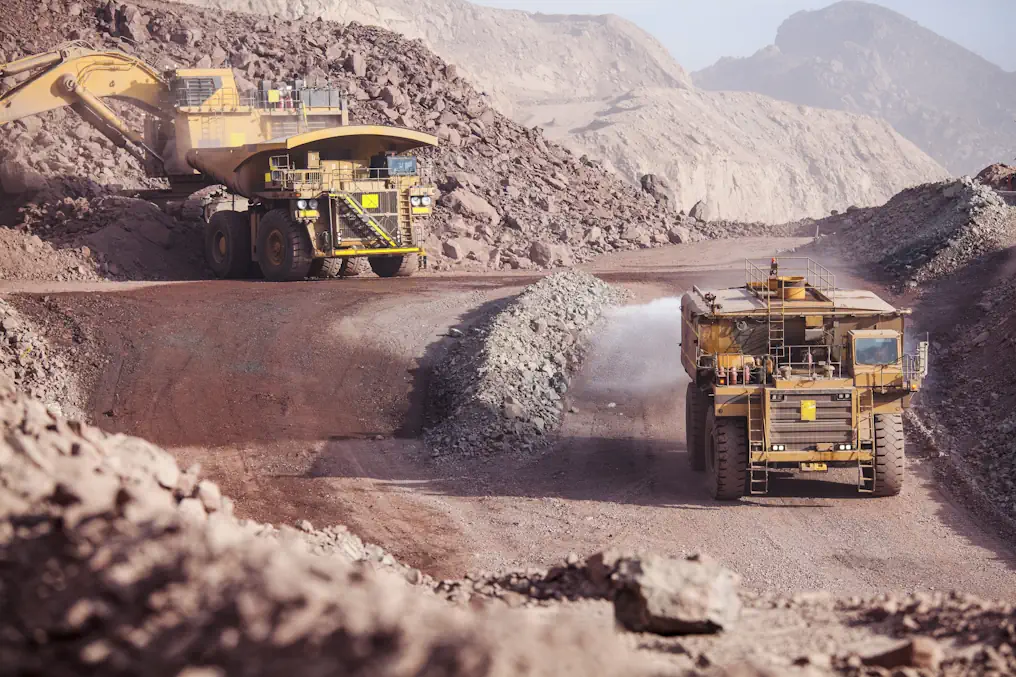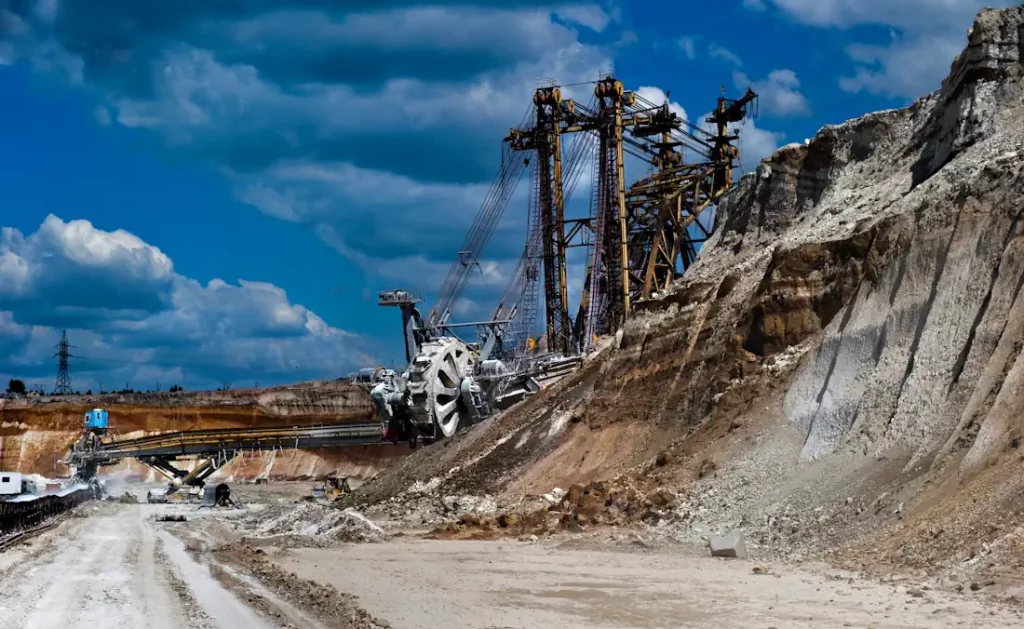Efficient Mining Equipment Transportation: Key Logistics and Regulatory Considerations

With the active development of new deposits, the need for specialized equipment delivery is growing. Mining equipment is characterized by large dimensions and heavy weight, requiring a special approach to logistics. In this article, we explain how to organize the safe and efficient transportation of such equipment. The material will be useful for mining professionals, equipment suppliers, and logistics managers. This article outlines key considerations to properly plan the transportation process — from choosing the right mode of transport and route to avoiding delays and damage.
Table of Contents:
- Key Challenges in Transporting Mining Equipment
- Choosing Transport and Equipment for Oversized Cargo
- Regulations and Permits: Legal Aspects of Transportation
- How Routes Are Planned for Oversized Mining Equipment
- Transportation Risks and How to Minimize Them
- Why Experience in Mining Equipment Logistics Matters
- Our Approach to Mining Equipment Transportation
- SYNEX Logistics Delivers Heavy and Oversized Cargo Worldwide
- Conclusions
Key Challenges in Transporting Mining Equipment
Transporting mining machinery is one of the most complex logistics tasks. Equipment for ore and mineral extraction can weigh hundreds of tons and significantly exceed standard dimensions. Their transportation requires low-bed trailers with reinforced axles, special platforms, and precise route calculations. Often, the equipment must be disassembled, increasing preparation time and requiring detailed labeling and documentation of each part. Mining facilities are frequently located in remote regions, meaning that weather, road conditions, crossings, bridges, and other infrastructure must be taken into account. The risks are high — even a minor error can result in accidents, equipment damage, or danger to personnel. In addition, the transportation process requires obtaining proper permits and approvals, as well as a deep understanding of the regulatory frameworks in each country involved.
Choosing Transport and Equipment for Oversized Cargo
Mining equipment is most commonly transported by rail, using specialized platforms and couplings designed to handle heavy loads and ensure stability. However, direct rail access to mining sites is often limited, making multimodal transportation necessary to reach the final destination. In such cases, multimodal solutions are used, combining rail, road, and maritime transport. The choice of transportation method depends on the cargo’s weight and dimensions, the route, and the availability of infrastructure.
Road transport is ideal for short and medium distances. Low-bed trailers with reinforced axles are used to carry loads up to 100 tons and 4.5 meters in height.
Rail platforms are suitable for transporting large-scale equipment over long land distances. These include universal flatcars and depressed center railcars engineered to accommodate substantial weight and non-standard dimensions.
Maritime transport involves Ro-Ro vessels, heavy-lift barges, and open-deck container ships — essential for international shipments and areas with limited land access.
Regulations and Permits: Legal Aspects of Transportation
The transportation of mining equipment falls into the category of oversized and heavy cargo, requiring full legal compliance and the acquisition of mandatory permits. Core requirements include strict adherence to the approved route and compliance with regulated speed limits.
To avoid delays, fines, and risks, it is crucial to address every stage of transportation proactively:
- Obtain an official permit from road traffic authorities, detailing the cargo’s parameters, route, timeframe, and conditions (e.g., nighttime movement restrictions or escort requirements).
- Coordinate the route with infrastructure owners — roads, railways, ports — taking into account bridge load capacity, overpass height, and axle load limits.
- Complete customs procedures for international transportation and ensure compliance with the requirements of transit countries.
- Ensure cargo escort services, including pilot vehicles (including those provided by traffic or road safety authorities, where required), as well as engineering support during loading, cargo securing, and unloading procedures.
- Ensure cargo insurance and legal support to minimize risks and ensure full compliance with all regulatory requirements.

How Routes Are Planned for Oversized Mining Equipment
Route planning is carried out well in advance to ensure safety, regulatory compliance, and technical feasibility throughout the journey — minimizing the risk of delays, disruptions, or operational issues. The process involves several key stages:
Preliminary cargo assessment. Evaluating the weight and dimensions of the equipment — these parameters determine the appropriate type of transport and the range of permissible route options.
Route selection. For road transportation, this involves evaluating road conditions, traffic levels, and available detours. For rail transport, this includes verifying the specifications of access tracks, confirming train schedules, and taking into account technical constraints set by rail operators.
Infrastructure constraints. This includes taking into account bridge load capacities, overpass clearance, tunnel dimensions, road widths, turning radii, and axle load restrictions to ensure the equipment can safely pass through all segments.
Permit acquisition. Obtaining all necessary transport permits and approvals from the relevant authorities.
Coordination. The route must be coordinated with all relevant infrastructure owners, including road authorities, railway operators, and port administrations.
Weather and seasonal considerations. Seasonal and weather-related factors can impact route safety and accessibility, so the transportation plan must account for potential restrictions or schedule adjustments.
Transportation Risks and How to Minimize Them
Transporting mining equipment involves a range of risks that can affect delivery timelines, safety, and the integrity of the cargo. Fortunately, most of these risks can be anticipated and effectively mitigated with proper planning and execution.
Key risks include:
- Cargo damage caused by vibrations, inadequate securing, or improper packaging;
- Delays due to adverse weather conditions or roadworks;
- Regulatory violations, such as missing permits or route deviations;
- Insufficient road safety measures during transit;
- Financial losses resulting from fines or compensation claims;
- Mechanical breakdowns or equipment failure;
- Adverse winter weather constraints that hinder mobility or require additional measures.
To minimize risks, logistics teams use durable materials, apply reliable securing systems, and ensure evenly distributed loading to protect the cargo. They plan routes based on weather forecasts and road conditions, and integrate real-time tracking technologies to monitor shipments. Preparing documentation in advance, arranging escort vehicles, installing warning beacons, and placing proper signage all contribute to safer transportation. To reduce financial risks, companies insure the cargo beforehand and work exclusively with vetted, experienced contractors. Regular technical inspections and staff training in handling oversized and heavy cargo help prevent breakdowns. During winter, it is essential to prepare additional equipment and adjust routes to accommodate seasonal challenges.
Why Experience in Mining Equipment Logistics Matters
Transporting mining equipment requires more than just trucks and permits — it demands deep industry knowledge and proven, hands-on experience. With machinery often weighing hundreds of tons and far exceeding standard transport dimensions, even a minor miscalculation can result in serious delays, equipment damage, or financial loss. That’s why the experience of the logistics provider plays a critical role. Skilled specialists understand how to distribute weight properly, select the appropriate platform, secure the cargo according to technical standards, and account for every detail — from fasteners to suspension systems. They are able to assess the full route, identify height, width, and load restrictions in advance, and develop solutions that avoid complications. Legal and regulatory expertise is equally important. An experienced logistics partner knows how to handle permitting procedures efficiently and coordinate with authorities to ensure smooth approvals. Experience brings confidence — it ensures that oversized mining equipment is delivered safely, on time, and without unnecessary costs.

Our Approach to Mining Equipment Transportation
At SYNEX Logistics, we believe that transporting mining equipment is not just about logistics — it’s an engineering challenge that requires precision, responsibility, and strategic planning. We understand the scale, complexity, and specific risks associated with its movement and safe delivery. Our team organizes multimodal transportation, enabling the efficient delivery of heavy and oversized cargo to hard-to-reach regions.
With a modern fleet, long-term partnerships with major European and Asian ports, and advanced digital tools, we maintain full control at every stage — from loading to final delivery. Each project begins with a tailored logistics plan that considers route specifics, risk factors, and industry requirements. We manage the entire process, including permit acquisition, cargo insurance, and real-time shipment tracking.
Our experience allows us to solve complex logistical challenges — including deliveries to hard-to-reach areas and the transportation of prefabricated units or modular equipment with non-standard specifications. We apply the same high standards to project and exhibition logistics, where timing, accuracy, and coordination are essential. Thanks to this approach, SYNEX Logistics has built a strong track record in managing large-scale, multi-component shipments with confidence and reliability.
SYNEX Logistics Delivers Heavy and Oversized Cargo Worldwide
SYNEX Logistics provides reliable solutions for the international transportation of heavy and oversized cargo across the globe. Through the use of multimodal strategies, we ensure the safe and efficient delivery of large-scale equipment and industrial materials.
With offices in Ukraine, Poland, the Czech Republic, and Kazakhstan, SYNEX Logistics coordinates shipments through Europe’s major ports while maintaining operational agility at every stage. We place special emphasis on routes to Central Asia, including direct shipments from China to Kazakhstan. We leverage advanced tracking and process automation technologies for cargo tracking and process management, enabling our clients to monitor their shipments in real time and maintain full visibility throughout the logistics chain. By entrusting your oversized or heavy cargo to SYNEX Logistics, you gain a reliable partner with the experience, infrastructure, and digital tools required for the successful execution of complex transportation projects.
Contact us today to discuss your project and receive a customized logistics solution tailored to your specific requirements.
Conclusions
Transporting mining equipment is a complex, multi-stage process that demands precise planning, technical preparation, and strict compliance with regulatory requirements. Reliable delivery is only possible with the involvement of an experienced logistics team, carefully designed routes, the use of specialized transport solutions, and thorough legal coordination. This integrated approach minimizes risk, protects the integrity of valuable equipment, and ensures timely delivery to the destination.




